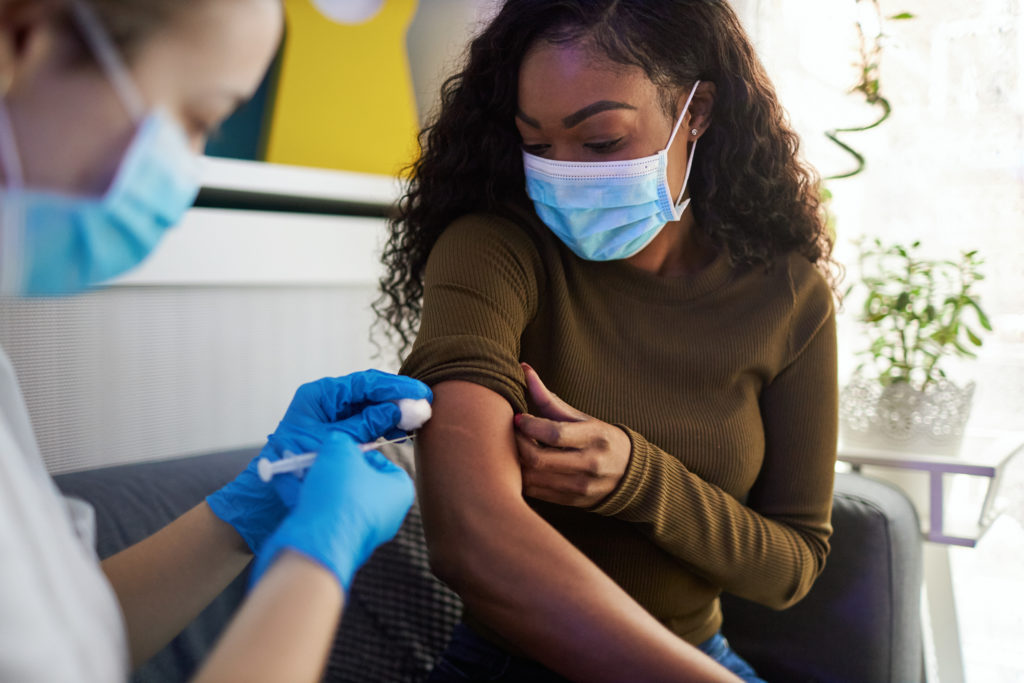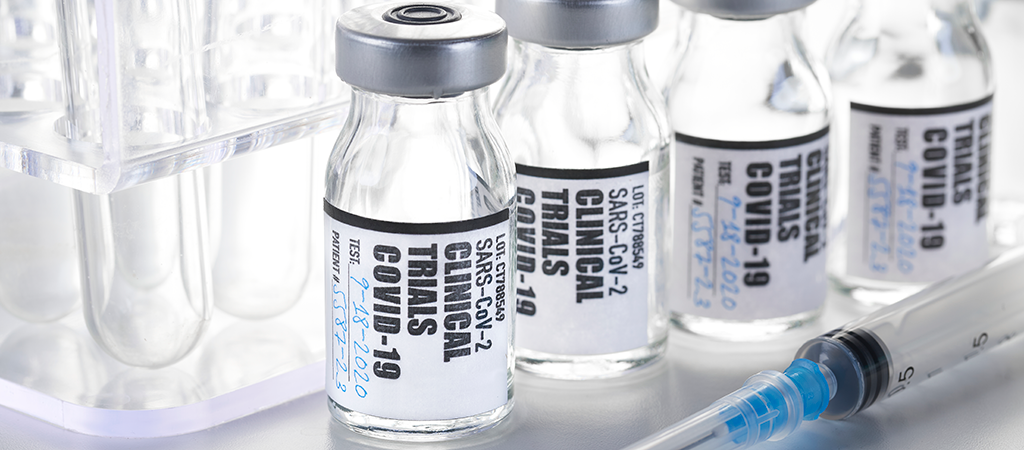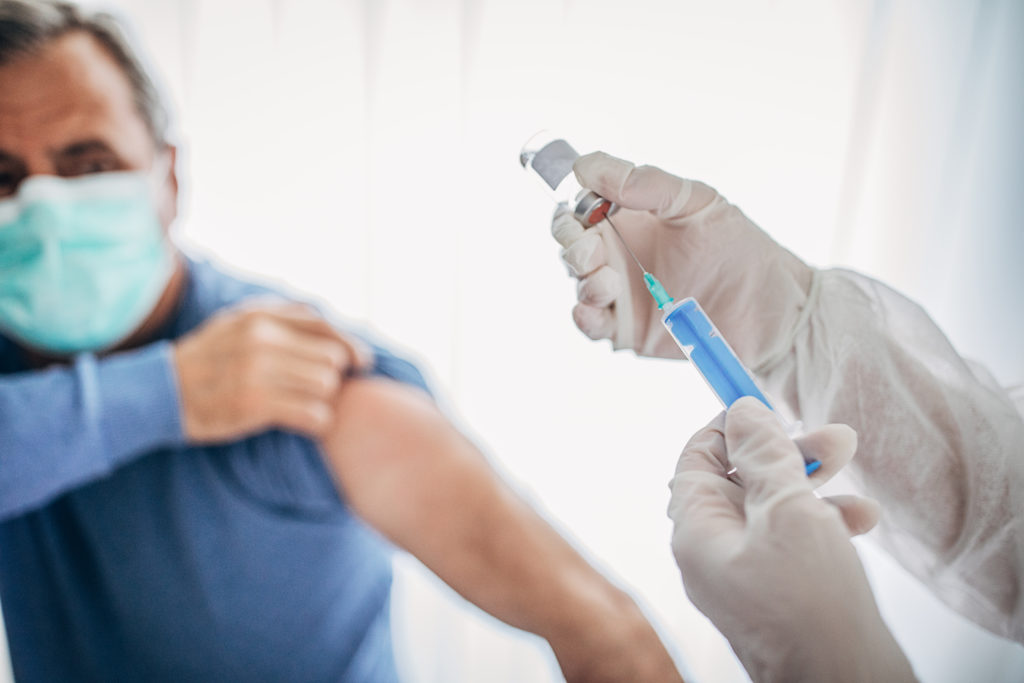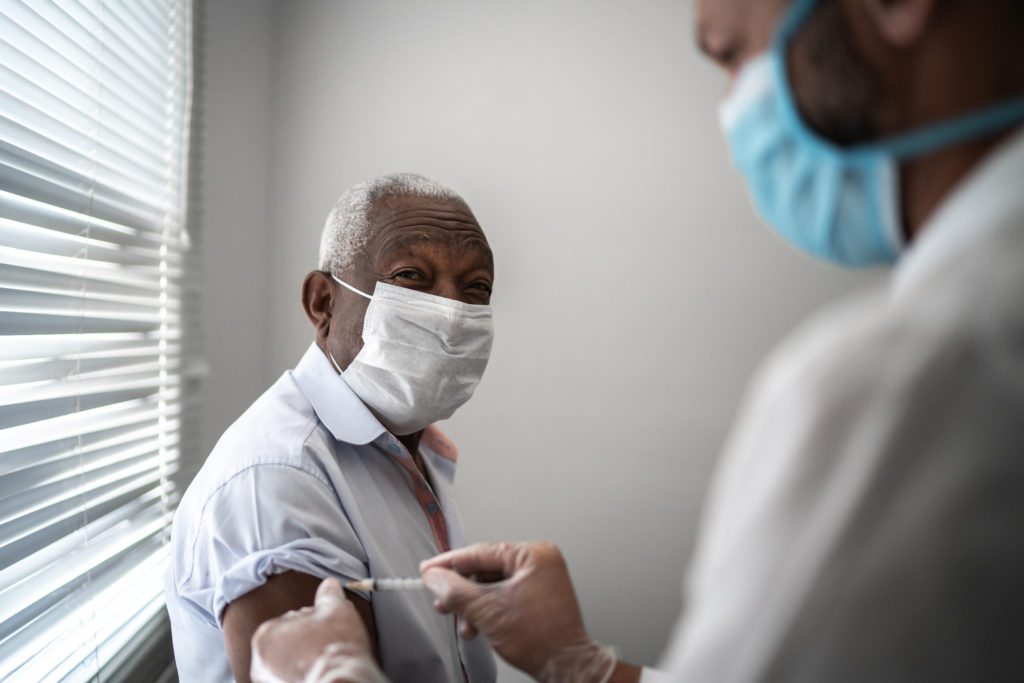
Employers are in a unique position to explain the benefits of vaccination to their employees and empower their workforce to better protect themselves and the community. When the general population becomes eligible, it is critical that employees are properly informed on what the COVID-19 vaccine is, how it works, and the testing it underwent to receive FDA approval.
How does the vaccine work?
The COVID-19 vaccines are the first to use messenger RNA (mRNA) technology. mRNA vaccines are created using a small part of a virus’s mRNA, a molecule that carries instructions on how to make a certain protein. Allison Weinmann, M.D., an infectious disease specialist with Henry Ford Health System explains:
-
- Step 1: The vaccine triggers our body to create COVID-19’s spike protein
- Step 2: The body recognizes this spike protein as something that should not be there. In response, the body manufactures proteins (or antibodies) to protect against it.
- Step 3: Messenger RNA disintegrates quickly after the ‘message’ is read, never getting anywhere near the nucleus of the cell that contains human DNA.

What ingredients are in the COVID-19 vaccine?
Both the Pfizer-BioNTech and Moderna developed messenger-ribonucleic acid (mRNA) vaccines. Historically, vaccines included a live but weakened strain of a virus, or a dead virus that has most of its genetic code intact. mRNA vaccines simply carry a small part of a virus’s mRNA, a molecule that carries instructions on how to make a certain protein, not the virus itself.
Pfizer-BioNTech COVID-19 vaccine ingredients:
-
- mRNA – The only active ingredient.
- Lipids – Protects the mRNA and provide somewhat of a “greasy” exterior that helps the mRNA slide inside the cells.
- Salts – Help balance the acidity in your body.
- Sugar – Helps the molecules maintain their shape during freezing.
Moderna COVID-19 vaccine ingredients:
-
- mRNA – The only active ingredient.
- Lipids – Protects the mRNA and provide somewhat of a “greasy” exterior that helps the mRNA slide inside the cells.
- Acids – Helps maintain the stability of the vaccine.
- Acid stabilizers – Helps maintain the stability of the vaccine.
- Salt – Helps maintain the stability of the vaccine.
- Sugar – Helps maintain the stability of the vaccine.

Is the vaccine safe?
Many employees worry that because the vaccines were developed in record time, some important safety corners were cut. Infectious disease experts continue to ensure the public that no safety or efficacy measures were overlooked during the approval process.
The reason the vaccine was able to be developed, tested, and approved so quickly was for two reasons. James Grant, senior vice president and chief medical officer at Blue Cross Blus Shield of Michigan, explained in a recent Detroit Regional Chamber COVID-19 Town Hall:
There was already work in progress for developing a vaccine for SARS. The framework was already there.
Parts of the three phases of the development process were done simultaneously, rather than in series, without impeding on safety.
“This vaccine is as safe, if not safer than others,” said Grant. “There is a natural worry when you’re getting any kind of vaccine – I get it, I sympathize with it – but we have to take a look at the whole picture. When you start putting it all together, the evidence is clear – you have to try to get the vaccine. It’s the only way we’re going to beat this. The FDA will not release anything that’s not safe.”
If vaccine side effects are going to happen, most are shown within the first six weeks, explained Arnold Monto, professor of epidemiology and global public health at the University of Michigan’s School of Public Health, during a Detroit Regional Chamber COVID-19 Town Hall.
Because minimal side effects were reported during clinical trials, employees should feel confident about receiving the vaccine as they become eligible. Allergic reactions are uncommon, occurring in 0.0011% of those vaccinated. Individuals are kept on-site for 15-20 minutes of observation after receiving the vaccine to monitor for any reactions, said Monto.

Is the vaccine effective?
“When we talk about efficacy numbers, we are talking about the chances of you getting COVID-19,” said Grant. “You can still get COVID and you can still test positive for COVID after receiving the vaccine, you just won’t get the symptoms, or the symptoms you do get will be much milder than if you didn’t have the vaccine.”
That is why vaccinated individuals must continue to wear a mask, socially distance, and follow all necessary safety guidelines.
Why is it important for the workforce to be vaccinated?
With new variants circulating, it is critical we continue to move swiftly through the ongoing vaccination process. “The new variants are more contagious. They’re not necessarily more harmful, but you may catch it sooner,” said Grant.
The COVID-19 vaccine is the only way we are going to control this virus and keep our loved ones, neighbors, and communities safe.
How is your organization handling vaccination?
The Detroit Regional Chamber is conducting an employer survey to measure how the business community is approaching the COVID-19 vaccination process for their company. Your input is important – take the survey today.